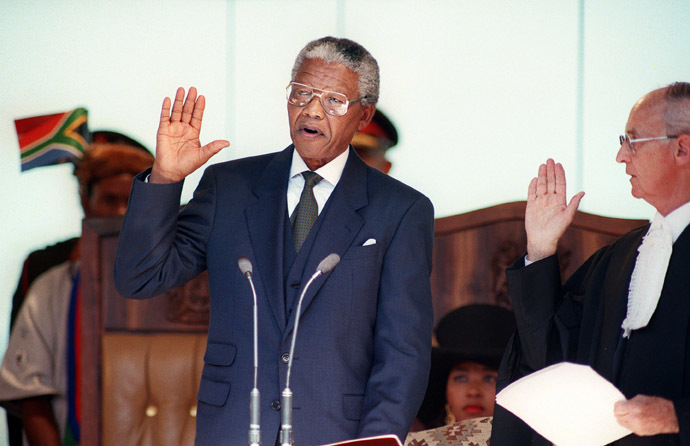RT
October 25, 2013

A section of the white population in South Africa is preparing for the worst scenario in case aging former South African President Nelson Mandela passes away. The national evacuation plan over possible genocide was drafted almost a decade ago.
Since Mandela’s was elected South Africa’s first black president in 1994 after spending 27 years in prison for actively opposing the segregationist policies of apartheid in the country, Afrikaners say over 3,000 white farmers have been murdered in revenge for the suppression enforced by its own National Party. Afrikaners say the government has never shown much desire to investigate the deaths.
And now as Mandela is in and out of hospital at age 95, Afrikaners and their supporters are preparing for the worst upon his death.
The Suidlanders is a right-wing group spread across the country devising a national evacuation plan should violence occur.
“We have the guidance, love and mercy of an Almighty Father, who supports us in the execution of His mission,” the group says on its website. “Therefore, the Suidlanders stand grateful, humble and prepared with faith, hope and love for our people, for a period of anarchy.”
They say they have thousands of groups meeting on a regular basis to support members “spiritually, emotionally and with practical assistance in preparing for times of emergency.”
“We have been planning for eight years,” head of emergency planning Coenie Maree told RT. “It started simple, the idea was to give people an option. We’ve divided the country into 27 provinces and divided those further into groups. Each group has its own plan.”
There are around three million Afrikaners across South Africa who are descendants of primarily northern Europeans who arrived in the country three to four centuries ago.
